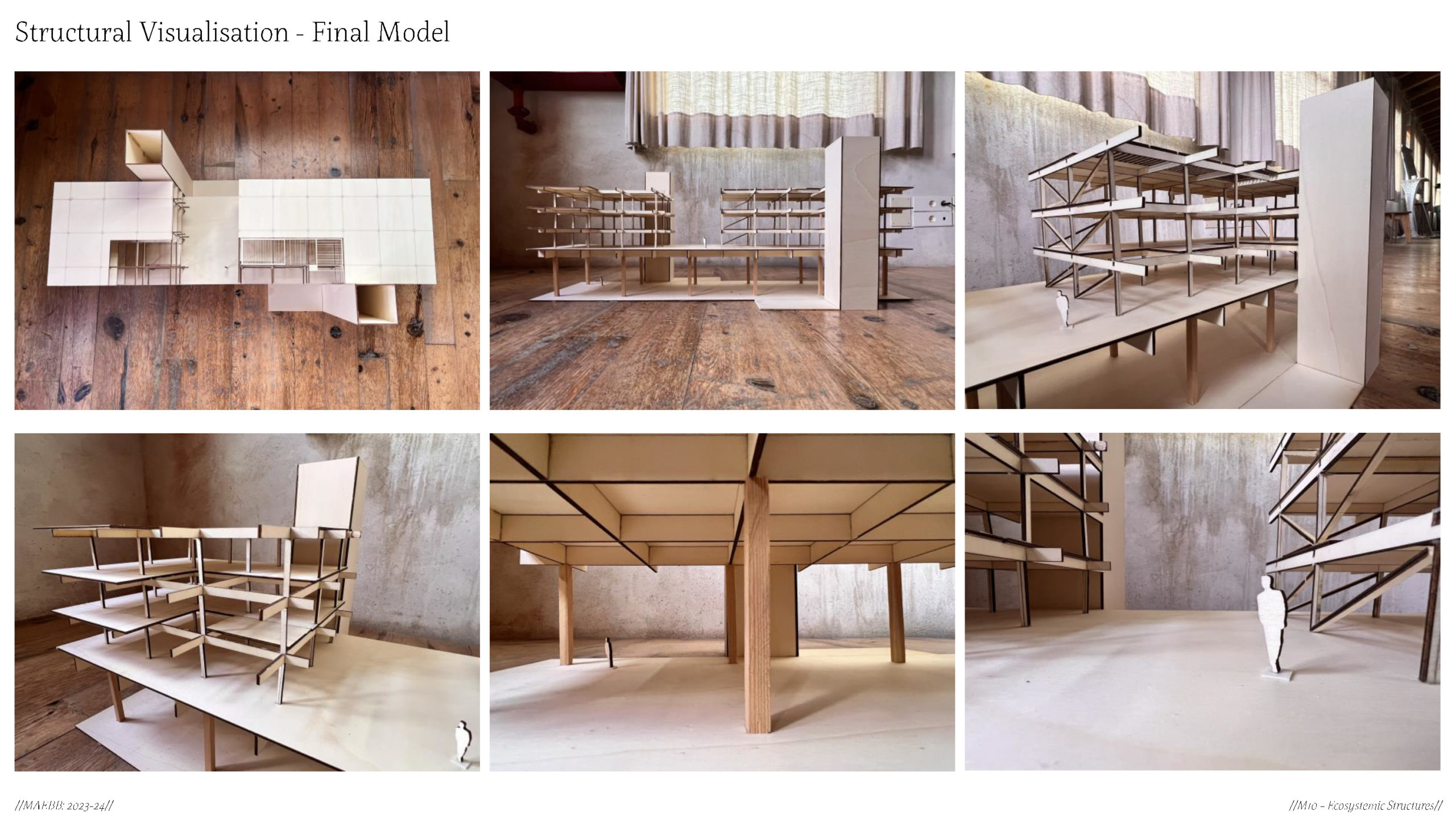The “Urban Alliance” is a mixed-use architectural design seamlessly integrating Industry 4.0 principles, featuring advanced photovoltaic production units. This visionary space harmoniously combines sustainable energy practices with residential and commercial areas, embodying a forward-thinking urban landscape that fosters eco-friendly living and innovative business practices. It exemplifies a holistic and tech-driven approach to urban planning. The project is located in Sant Adrià de Besos, Barcelona. Sant Adrià de Besos is predominantly an industrial zone with minimal high rise buildings placed in its context, as well as scarce natural vegetation. The aim of the thermodynamic fabrications course is to generate a design that is climatically coherent using passive design strategies making the overall scheme a self sufficient project.
The second module for our Urban Synthesis project focused on the design of structural systems, mainly timber structures. Our project, after designing the thermodynamic strategies, is organized in a 5 meter by 5 meter grid. This facilitated a lot of our decision-making, like the placement of our circulation cores, our columns, and our beams.
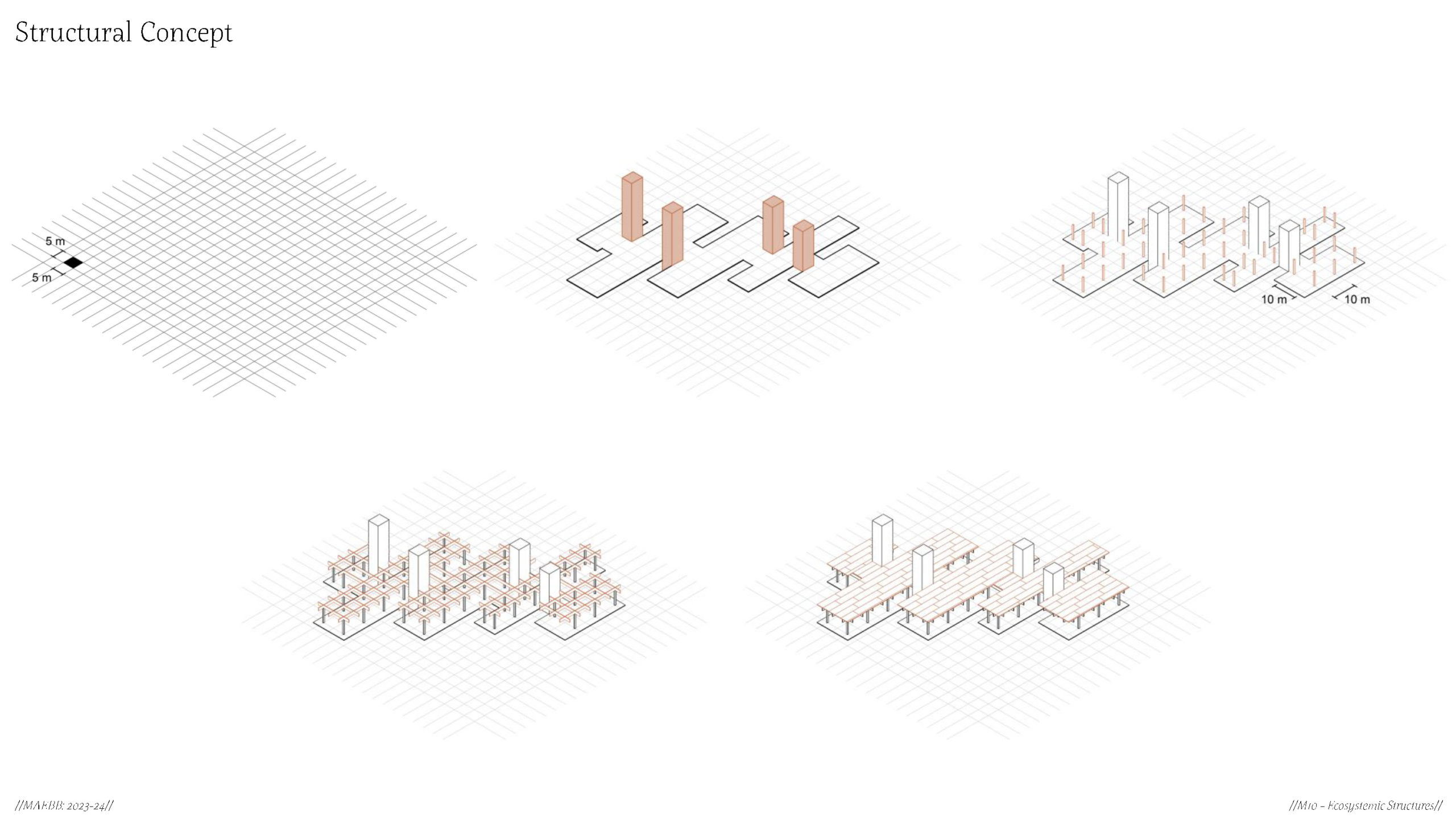
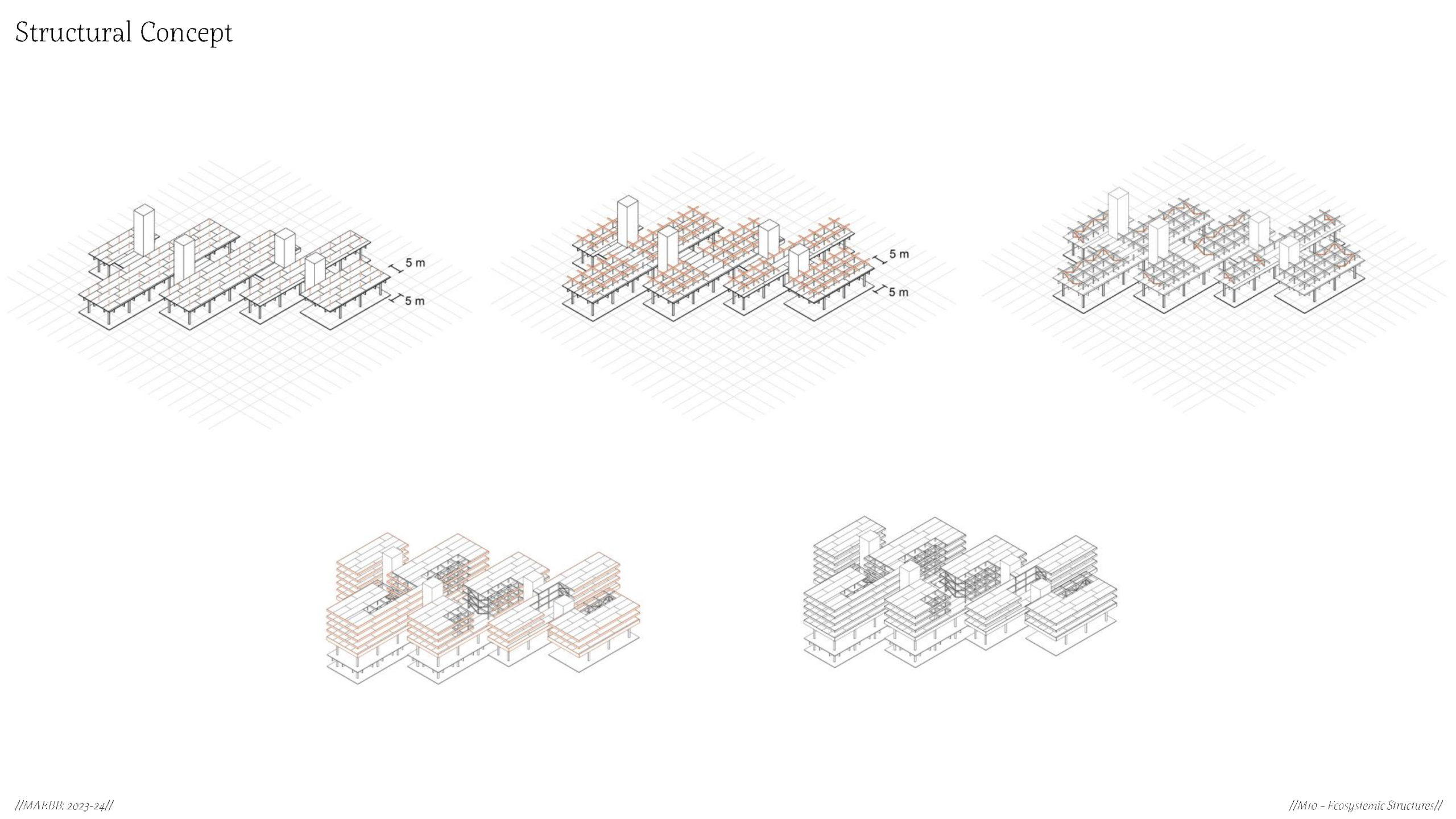
The CLT circulation cores act as the main rigid elements that support the rest of the structure. The series of GLT columns and beams are the primary structure system that follow our grid. On the ground floor of our industrial space, the columns are spaced at 10 meters with dimensions of 50cmx50cm, and the beams run on 2 directions and intersect at ever 5 meters, each with a height of 1.2 meters and width of 25cm.
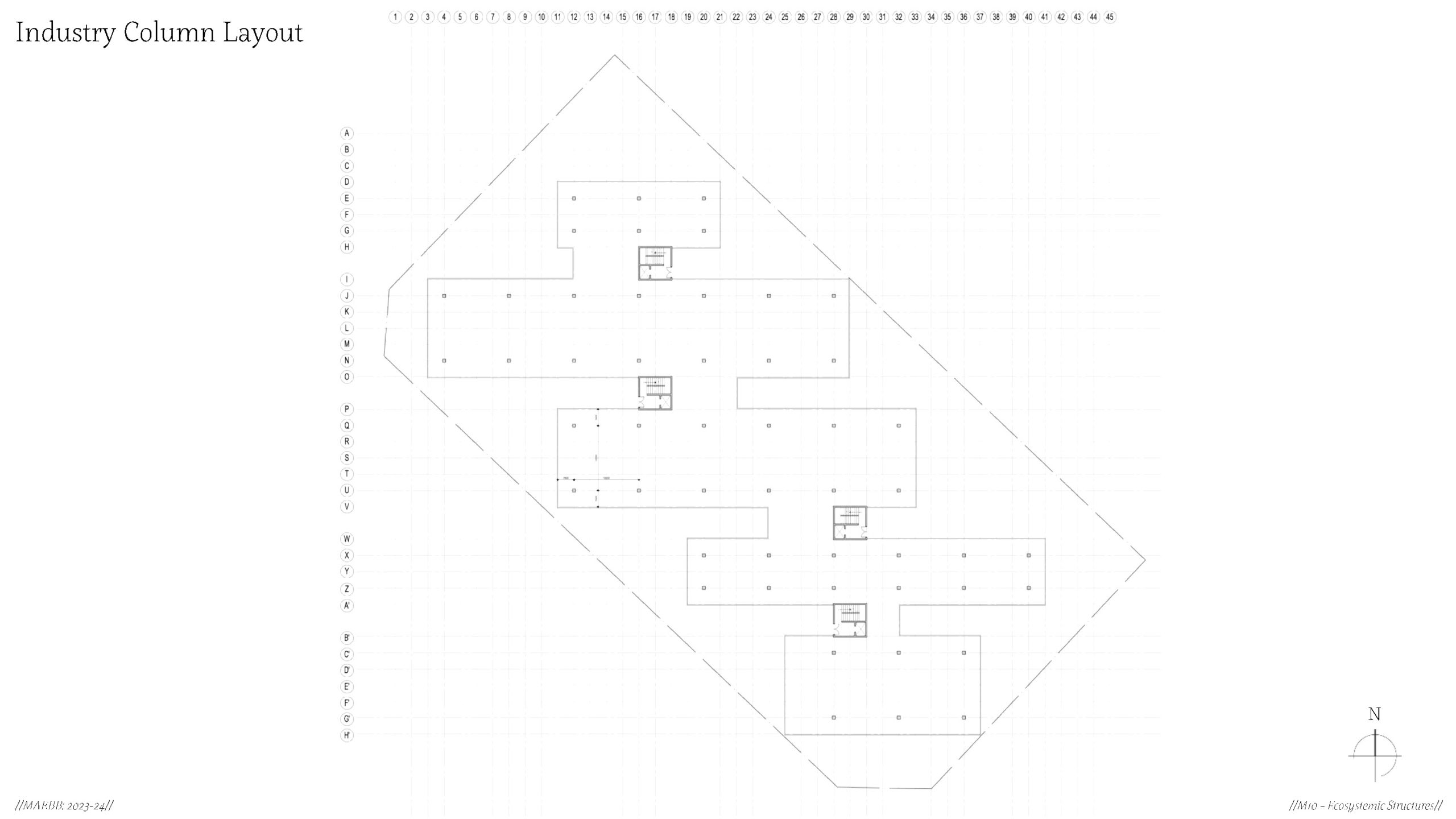
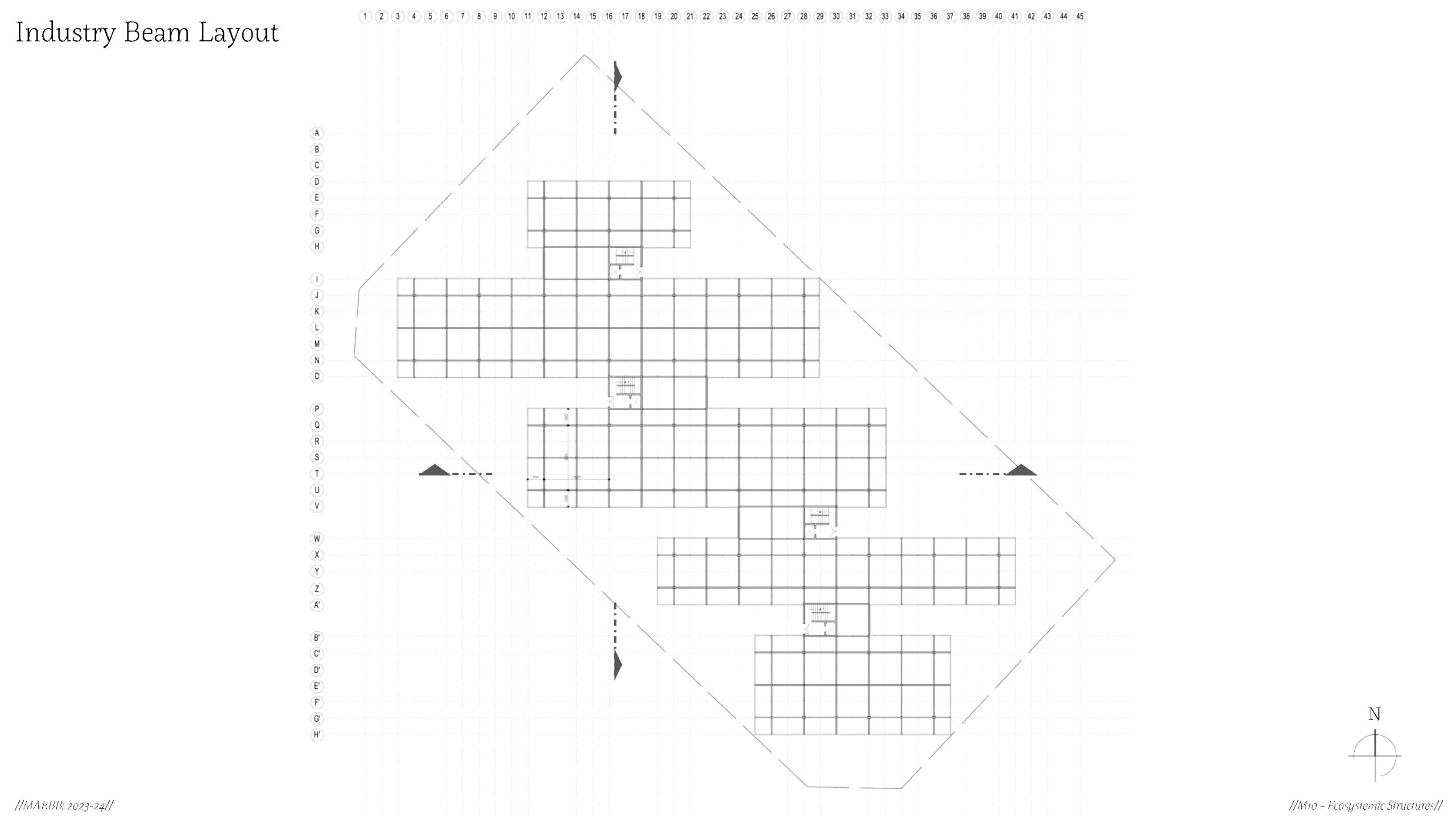
On top of the industry, the residential spaces are also aligned on the 5×5 grid, and the columns are spaced at every 5 meters with dimensions of 25cmx25cm. The beams are organized just as in the industry, but with a height of 50cm*.
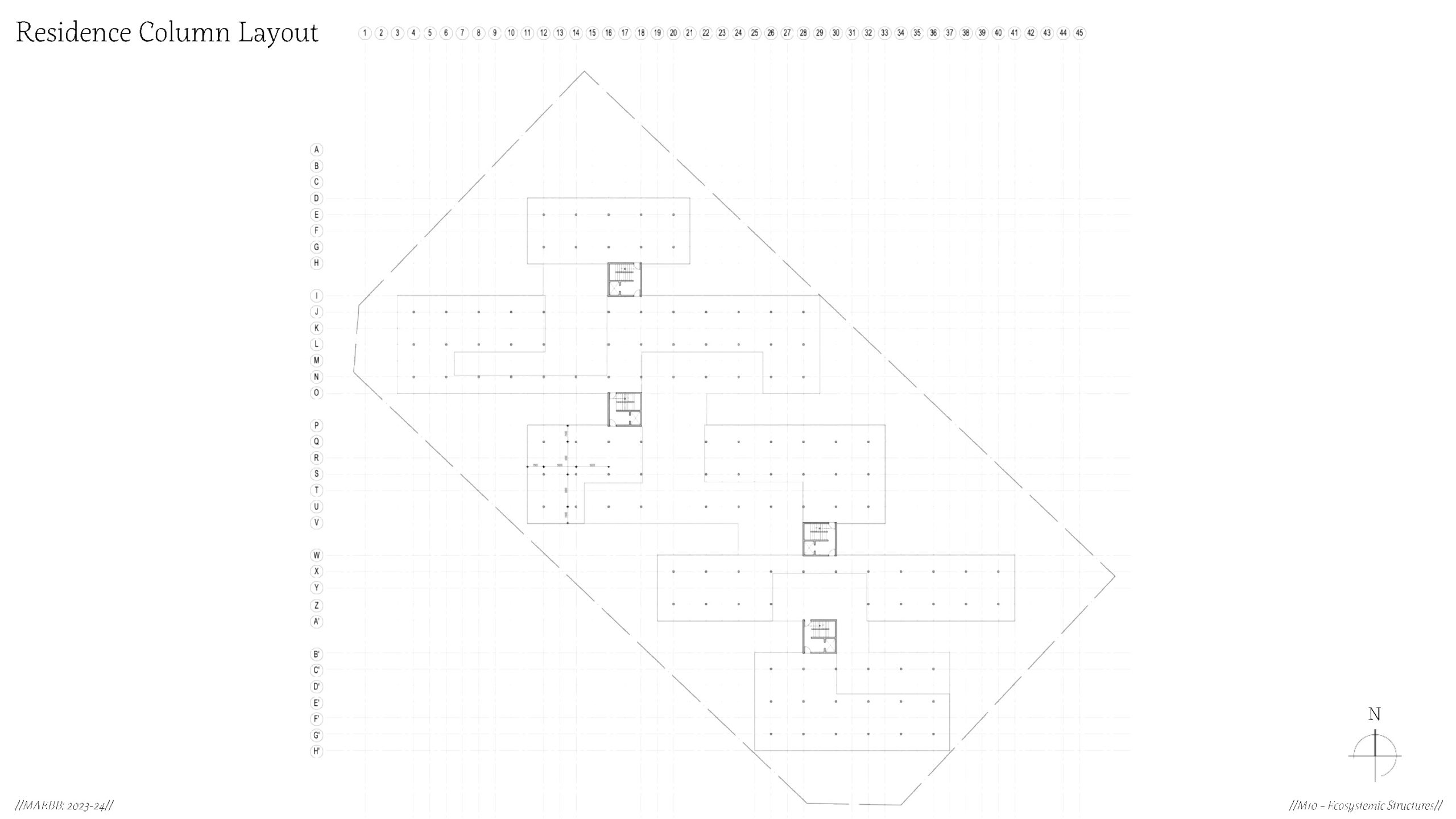
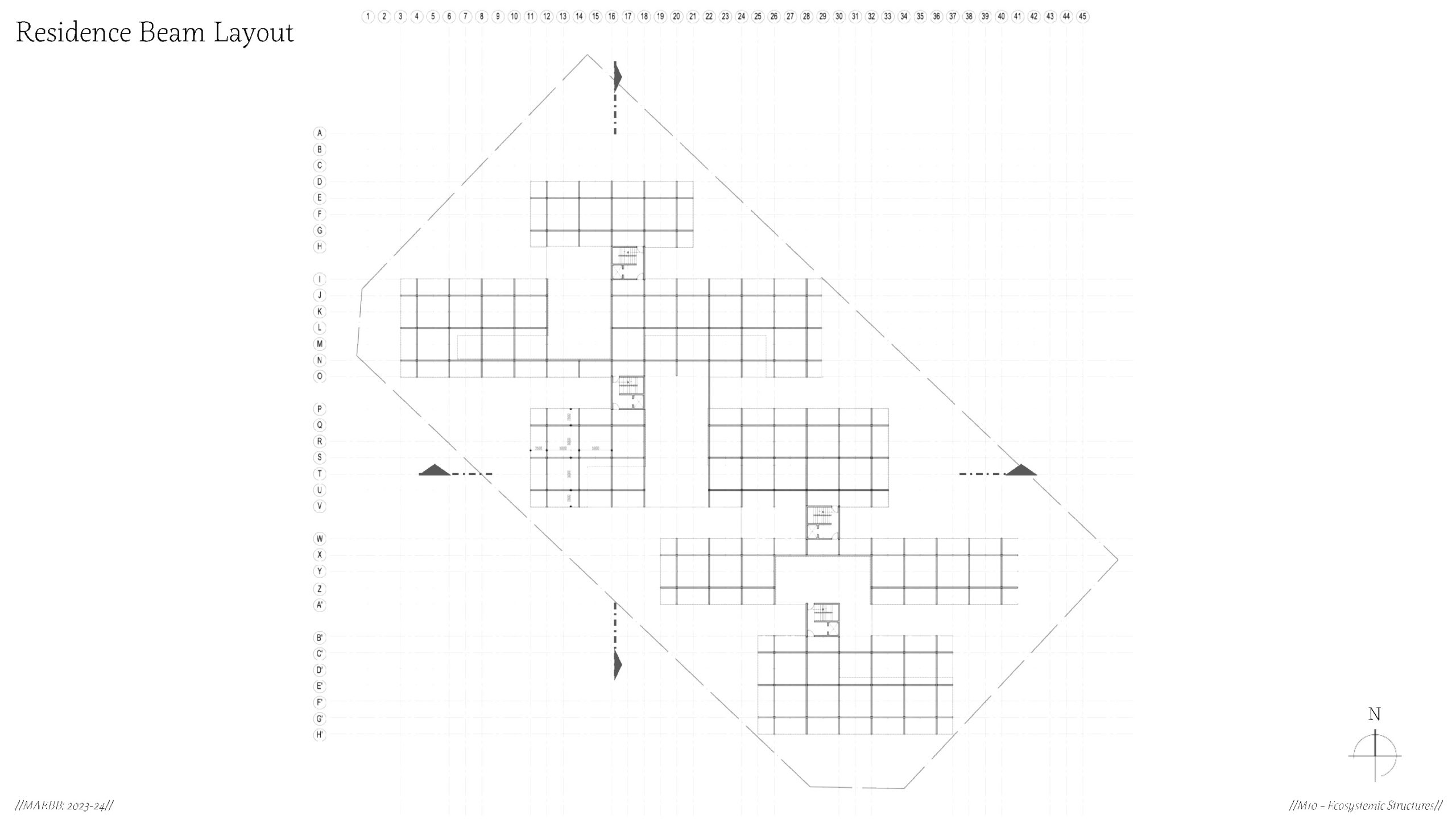
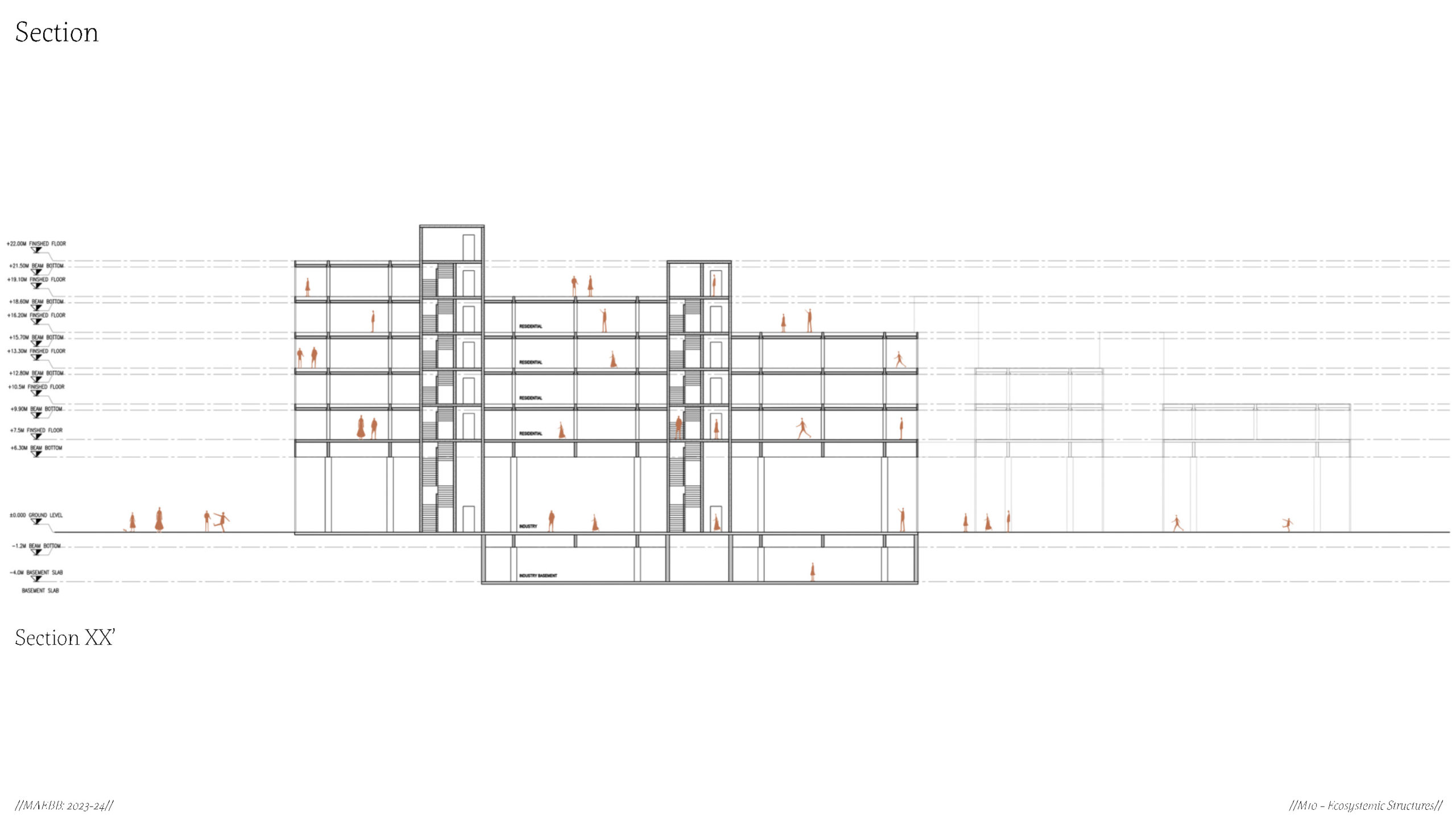
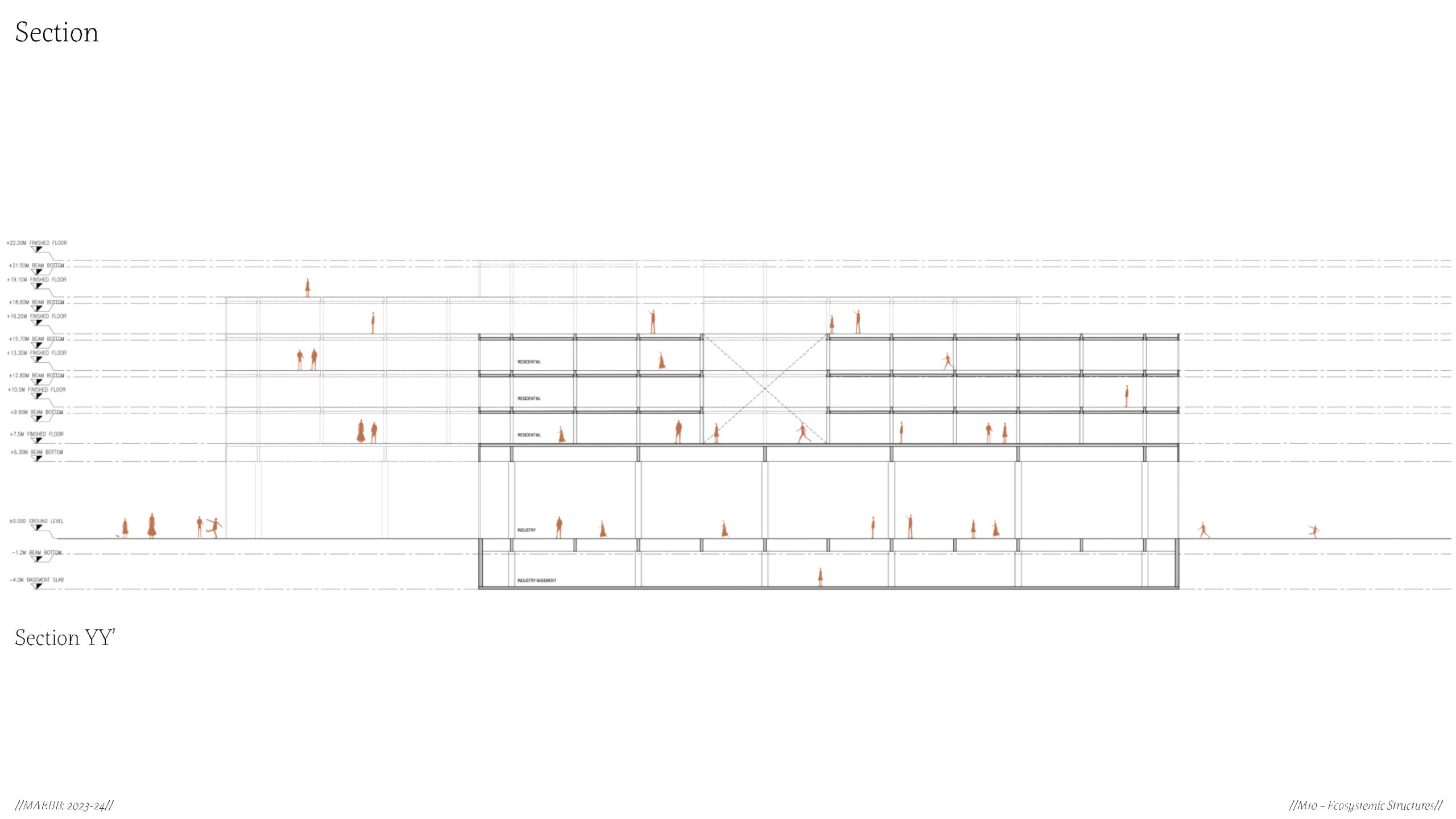
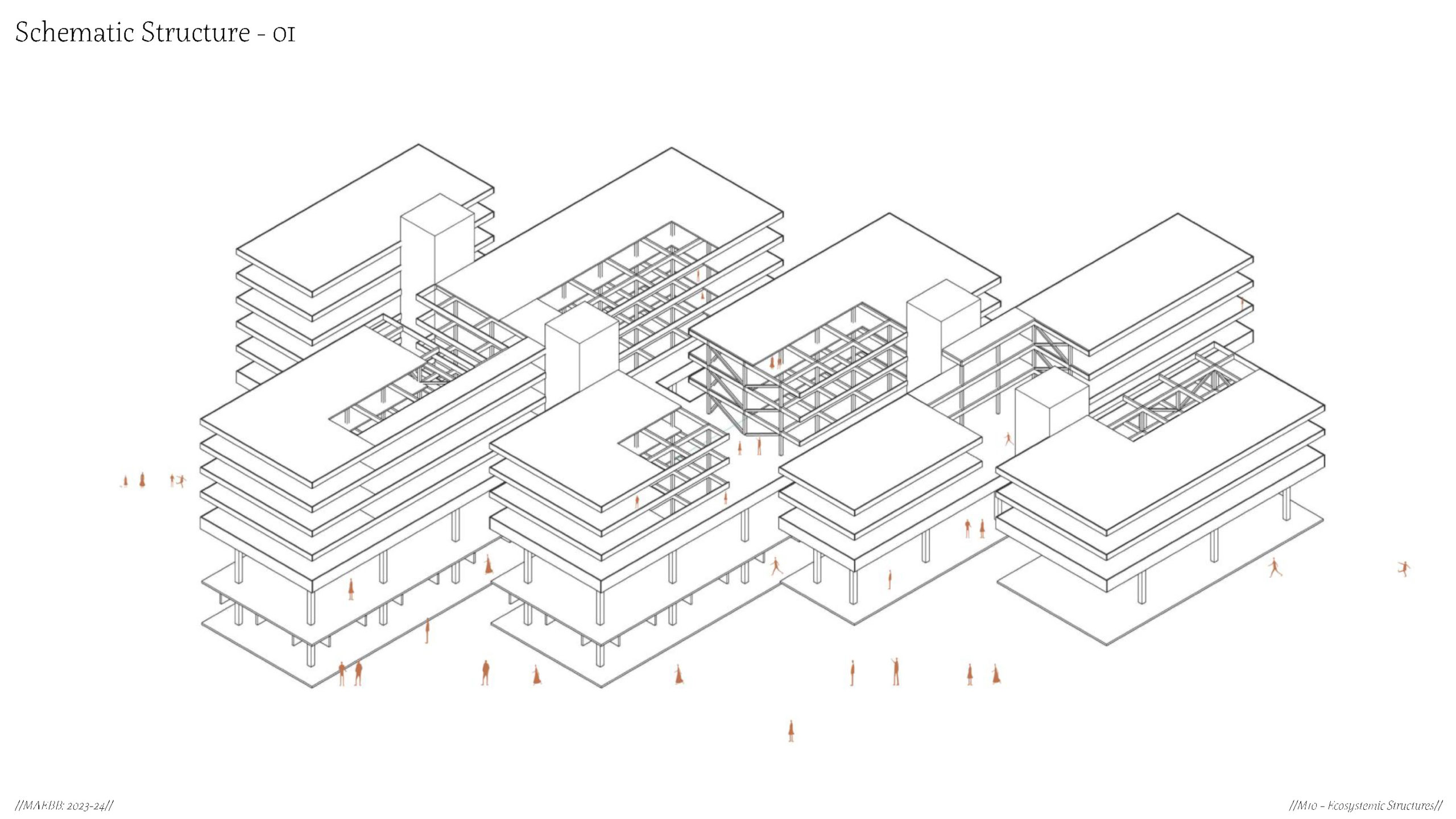
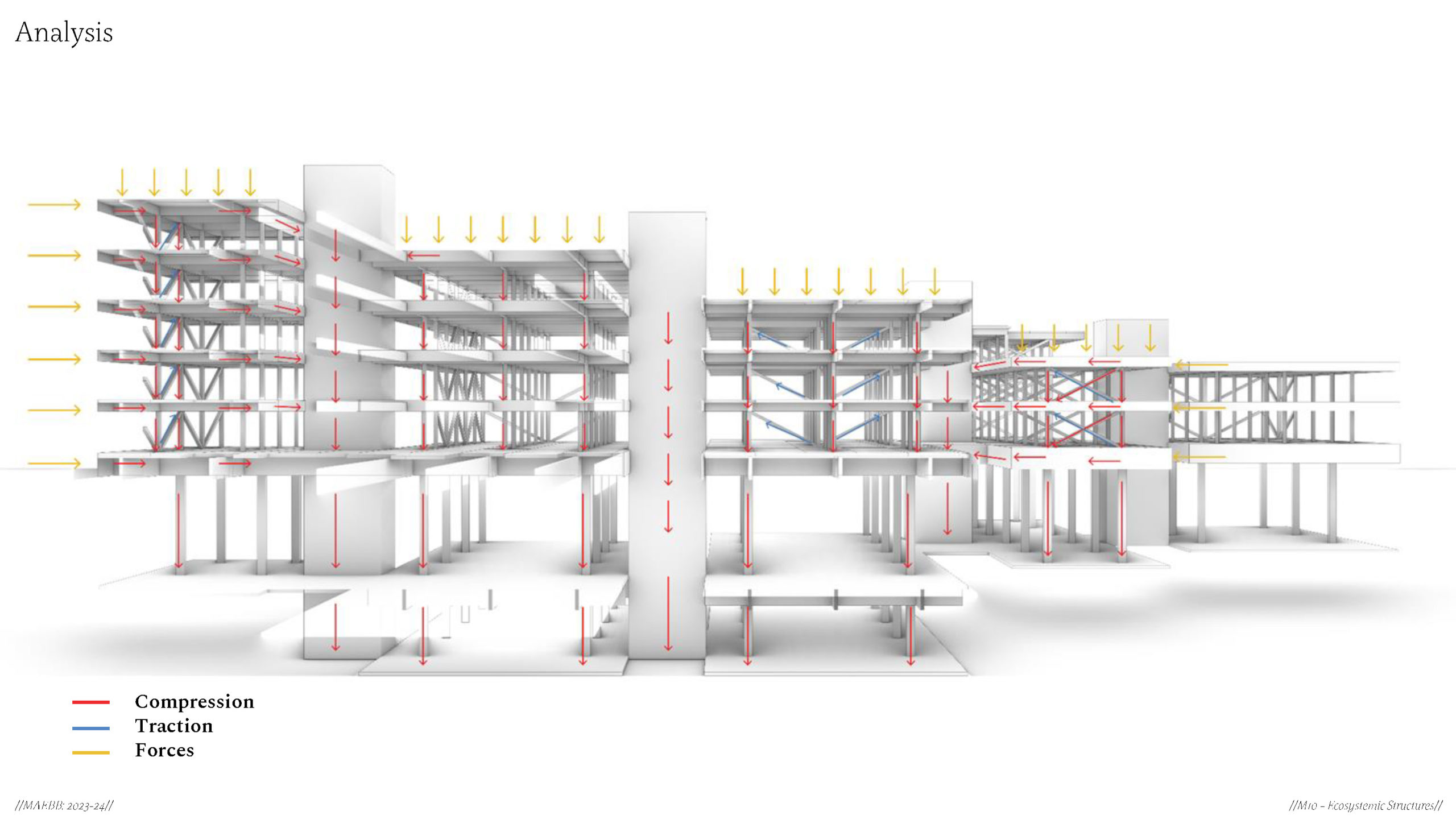
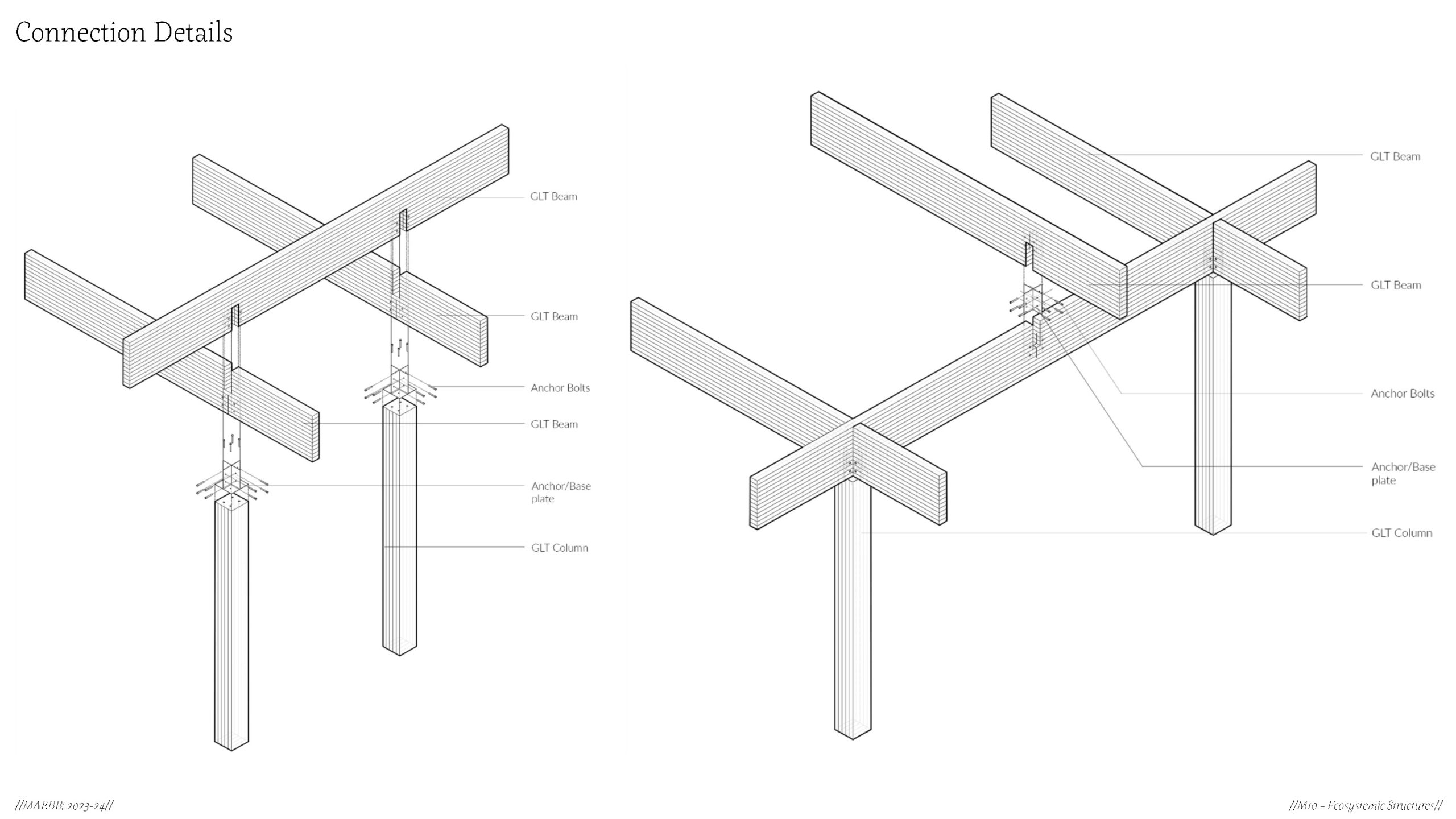
The next layer of our structure consists of CLT slabs all throughout our project. In the industry, the slabs sit on top of the rectangular beams and the beams are then covered with a “ceiling” underneath, allowing for the space in between to be used for utilities. In the residences, the beams are an upside-down T-shape, with the slabs overlapping the “T”.
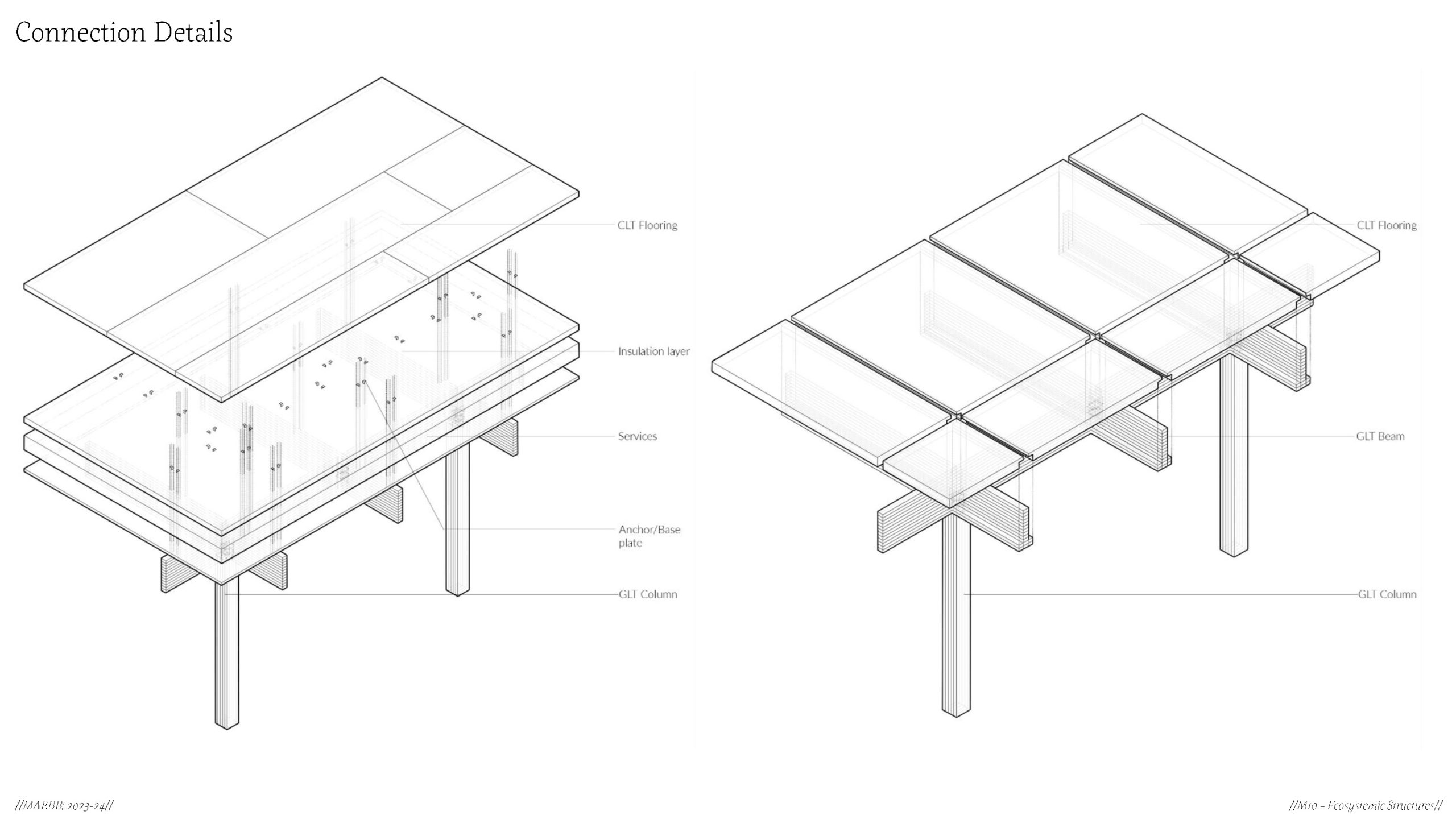
To test our structure system, we build a physical model of the section in our project that features two circulation cores at opposite sides at 1:50 scale. In this model, we show how the cores act as the rigid support for the beams on the long-spanning slab. While making this model, we realized we needed to add diagonal bracings on the residential levels as extra support. We concluded that our system works well with a few tweaks.
